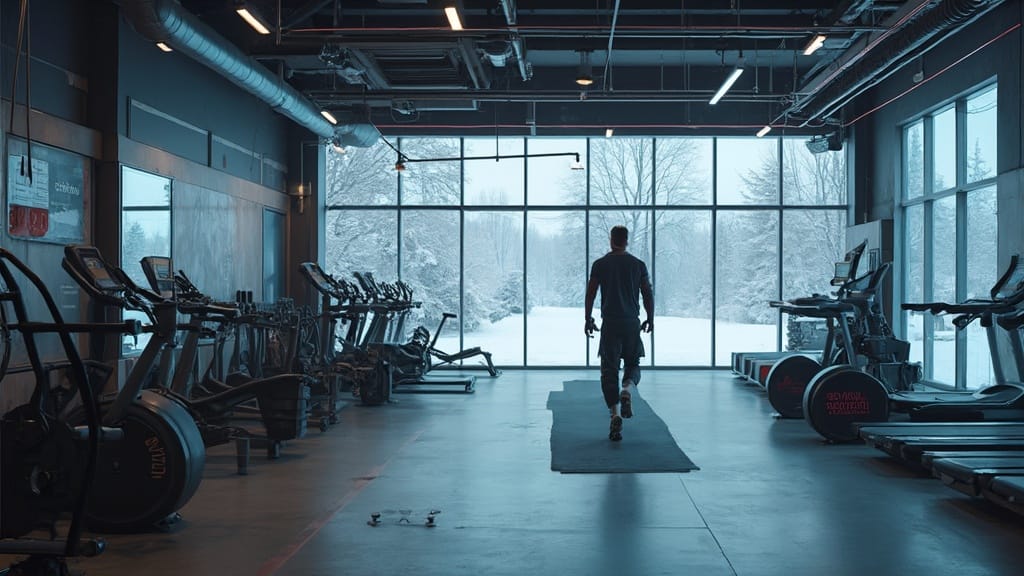Understanding the Physical Demands
Skiing and snowboarding require a unique combination of strength, balance, and endurance. These winter sports place significant demands on multiple muscle groups while requiring exceptional cardiovascular fitness. The body must constantly switch between aerobic and anaerobic metabolism while maintaining stability on varying terrain. Success on the slopes depends heavily on developing specific muscle groups and movement patterns before the season begins.
Optimal Training Timeline
The ideal preparation period begins 6-8 weeks before hitting the slopes. This timeframe allows adequate adaptation of muscles and cardiovascular systems while building the necessary strength and endurance. However, even 2-3 weeks of focused training can significantly improve performance and reduce injury risk for those with a good fitness baseline.
Key Muscle Groups
Lower Body Focus
The quadriceps, hamstrings, and glutes form the power center for both skiing and snowboarding. These muscles work together to maintain proper stance, control speed, and execute turns. The quadriceps are particularly crucial for maintaining balance and absorbing shock while navigating various terrains, while the hamstrings provide stability and help prevent knee injuries.
Core Strength
A strong core is fundamental for both sports, as it bridges the upper and lower body while preventing unnecessary movement. The abdominals, obliques, and lower back muscles work together to maintain stability and balance, especially during quick directional changes.
Upper Body Requirements
While often overlooked, upper body strength plays a vital role, particularly for skiers using poles. The triceps, shoulders, and back muscles contribute to overall control and balance.
Essential Training Components
Strength Training Protocol
Lower Body Exercises
- Squats and reverse lunges for quad and glute development
- Romanian deadlifts for hamstring strength
- Lateral ski jumps for power and agility
Core Stabilization
- Planks with leg movements
- Side planks with leg raises
- Mountain climbers for dynamic core strength
Balance Training
- Single-leg exercises
- Wall sits for endurance
- Box jumps for explosive power
Cardiovascular Conditioning
The program should include both steady-state cardio and high-intensity interval training to prepare for the varying demands of mountain sports. A combination of:
- 30-60 minute endurance sessions
- High-intensity intervals
- Sport-specific movement patterns
Injury Prevention Focus
Strength training serves as a crucial component of injury prevention. Strong muscles help protect joints, particularly the knees, which are vulnerable during skiing and snowboarding. The program should emphasize:
Stabilization Work
- Balance exercises
- Proprioception training
- Multi-directional movement patterns
Recovery Protocols
- Proper warm-up and cool-down routines
- Flexibility training
- Adequate rest between sessions
Training Schedule Structure
Weekly Framework
- 2-3 strength training sessions
- 2-3 cardio workouts
- 1-2 flexibility/mobility sessions
Session Components
- Dynamic warm-up
- Power/strength exercises
- Endurance work
- Balance training
- Flexibility/mobility work
Environmental Considerations
Altitude presents a unique challenge for winter sports. To prepare for high-altitude conditions:
- Increase aerobic and anaerobic capacity
- Practice deep breathing techniques
- Focus on hydration strategies
Progressive Training Approach
Phase 1: Foundation (Weeks 1-2)
- Focus on proper form
- Build base strength
- Establish movement patterns
Phase 2: Building (Weeks 3-4)
- Increase intensity
- Add complex movements
- Incorporate sport-specific exercises
Phase 3: Peak (Weeks 5-6)
- Maximum intensity
- Power development
- Sport-specific movement patterns
Mobility and Flexibility
Proper mobility in all three planes of motion is essential:
- Sagittal plane (forward/backward)
- Frontal plane (side-to-side)
- Transverse plane (rotational)
Daily mobility work should focus on:
- Hip mobility
- Ankle flexibility
- Thoracic spine rotation
- Dynamic stretching routines
Performance Enhancement
Beyond basic strength and conditioning, advanced athletes should incorporate:
- Plyometric training
- Agility drills
- Sport-specific movement patterns
- Balance board work
Recovery and Maintenance
During the winter sports season, maintain fitness with:
- Modified strength sessions
- Recovery workouts
- Flexibility work
- Proper nutrition and hydration
Conclusion
A well-designed strength training program is essential for winter sports preparation. By focusing on specific muscle groups, incorporating proper progression, and maintaining consistency, athletes can significantly improve their performance and reduce injury risk on the slopes. The key is to start early, maintain consistency, and gradually increase intensity while paying attention to recovery and proper form. This comprehensive approach ensures that when the snow falls, you'll be ready to make the most of every run, from first chair to last call.
Remember that individual needs may vary, and it's essential to adjust the program based on current fitness levels, previous injuries, and specific goals. Consider working with a qualified fitness professional to develop a personalized plan that addresses your unique needs and objectives.















